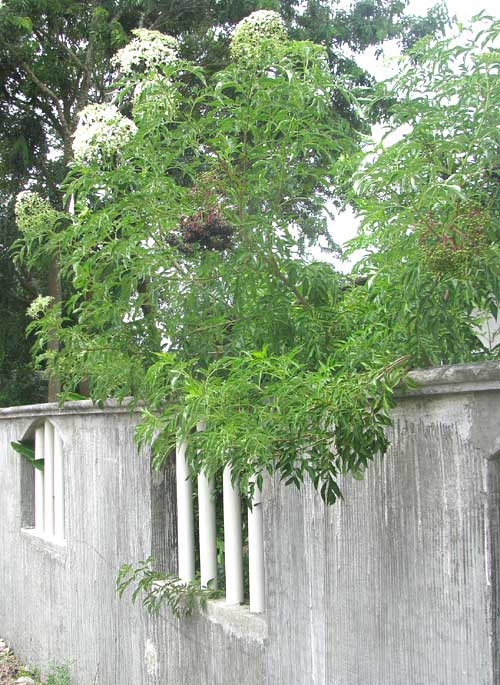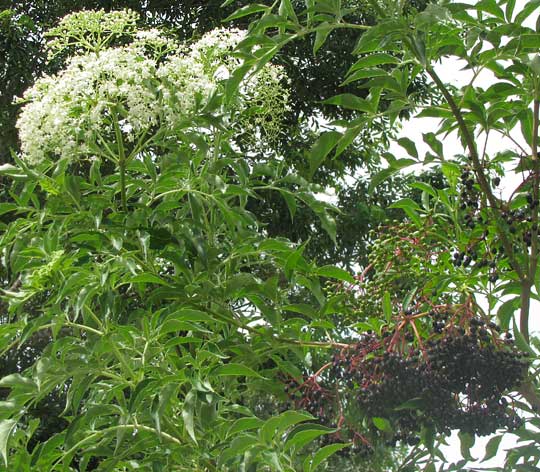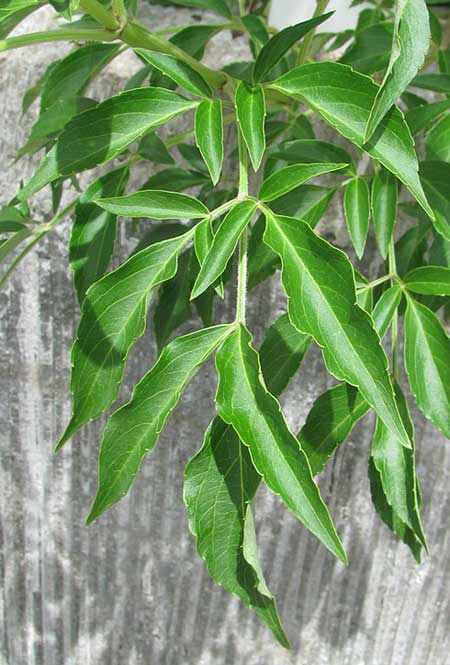Excerpts from Jim Conrad's
Naturalist Newsletter
from the October 3, 2010 Newsletter issued from Hacienda Chichen Resort beside Chichén Itzá Ruins, central Yucatán, MÉXICO; limestone bedrock, elevation ~39m (~128ft), ~N20.676°, ~W88.569°
MEXICAN ELDER
As I biked down a backstreet in Pisté a familiar form greeted me from across the six-ft concrete wall shown below:

Anyone halfway familiar with the flora of North America or Europe will recognize this robust woody bush with basketball-size, flattish to round-topped, heads of small, white flowers, and similar-sized drooping clusters of blackish, pea-sized fruits, and pinnately compound, opposite leaves, as a kind of elder, or genus Sambucus, of the Honeysuckle Family, the Caprifoliaceae. A closer view of both a flowering head and a fruiting head is shown below:

However, the species in the picture is clearly different from any of the common elder species of both North America and Europe. For one thing, it's larger than the American species. Also, several of the other species produce red fruits instead of black, and of the black-fruited species the fruits of some are coated with a silvery sheen, or glaucousness, while our fruits are plain black. Also, this species' leaves are sometimes twice compound -- something seen in few other elder species -- as shown below:

At this point I'm supposed to reveal the name, but that's tricky because the taxonomy of the genus Sambucus is a real mess. A year ago in Oregon's Siskiyou Mountains we looked at western North America's Blue Elderberry. Of that species' technical name I wrote:
California's Jepson Manual calls it Sambucus mexicana but the USDA lists it as Sambucus nigra ssp. cerulea, and Wikipedia's expert claims that it's Sambucus cerulea."
So you see that "Sambucus mexicana" is the name the well respected Jepson Manual calls the Californian species. But "SAMBUCUS MEXICANA" is the very name most often used for our present elder bush, though it's clearly a different species. For one thing, different from ours, the California species' black fruits are coated with silvery glaucescence, as shown on their page at www.backyardnature.net/n/w/blue-eld.htm.
So, until an expert comes along telling us what's right, I'm calling our California Blue Elder Sambucus cerulea, and our Pisté garden species Sambucus mexicana, the Mexican Elder.
Sambucus mexicana is native to the Mexican uplands, where its Spanish name is Sauco, but not to the Yucatan. Here it's strictly planted as a garden species. Its fruits are edible.